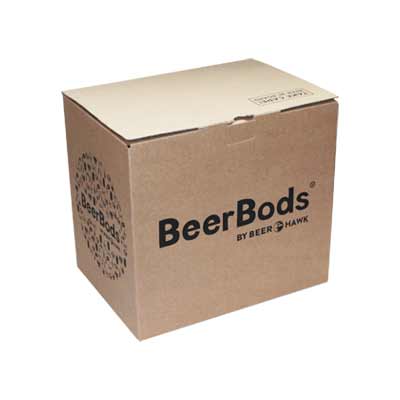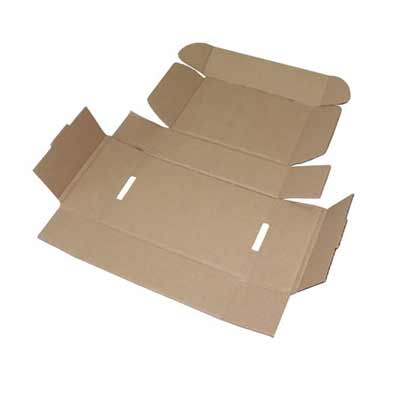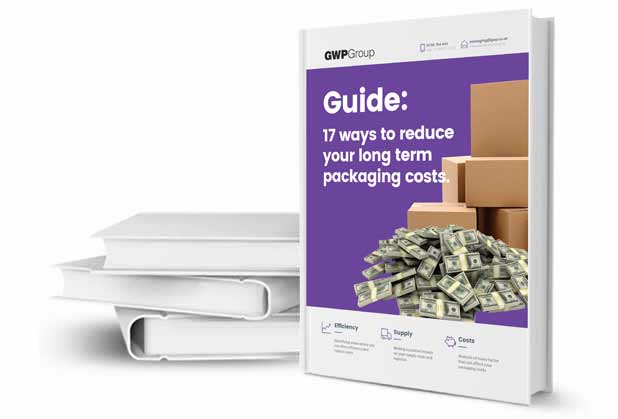What is cardboard?
And why should you care?
Take a moment to look around. Chances are, cardboard has touched your life today, probably more than once. Maybe it was the box your latest online order arrives in, the packaging around your groceries, or even the containers used to ship products you rely on every day. Even if you haven’t interacted with it directly, cardboard has almost certainly played a role in getting the products you love from point A to point B.
But have you ever paused to think: what exactly is cardboard? How is it made? Why is it so widely used?
In this guide, we’ll dive into the fascinating world of cardboard. From its raw materials to the manufacturing process, and the reasons behind its enduring popularity, you’ll come away with a solid understanding of this humble yet essential material. Whether you’re curious about sustainability, manufacturing or love knowing how everyday things are made, this guide has you covered.
Contents
Initial development
The origins of cardboard
Despite the confusion over his nationality (either Swedish or German), Chemist Carl. F. Dahl developed the process of pulping wood, which was later to be used in the paper-making process. He names the development the “Kraft process”, a term which still stands in the present day.
Coincidentally, the German word for strength is “Kraft”. The advanced method, given its name for the strong, robust nature of the finished product, turns woodchips into a paper that won’t split or tear.
The practice has also been described as an expansion and modification of the soda process, with sodium sulphate as the primary chemical used in a cooking liquor rather than sodium hydroxide.
The process now used nationally was created in Kraft or Pulp Mills. Dahl established the first Kraft Mill in Sweden in 1885.
Pulp
What is pulp, and how is it made?
Before delving too far into these details, if you are looking for a better understanding of pulp, the first requirement is to acknowledge where the production initially commences.
Mills
A Pulp Mill is an industrial facility, usually large, that converts timber, woodchips, and other wood products into pulp using the Kraft or other processes.
These should not be confused with a Paper Mill. A non-integrated Paper Mill will purchase pulp from a Pulp Mill that has been dried and transported in bale form (market pulp). The bales will be rehydrated at the Paper Mill with a solution, then made into paperboard.
The raw materials
Fibres from any plant or tree can be used to make paper; however, the strength and quality of these fibres vary among tree species.
Hardwood trees tend to have shorter fibres, which produce weaker paper, but this also creates a smoother, opaque finish, generally more suitable for printing.

On the other hand, softwood trees such as pines and firs have longer, stronger fibres, which contribute to the strength of corrugated packaging.
Pulp is not only produced from timber but can also be created in an environmentally friendly way by recycling woodchips and shavings leftover from lumber mill waste.
Before being recycled, this waste was disposed of in landfills or burned.

Pulp processes
The pulping process aims to break down the fibre source’s structure into fibres ready for market pulp production.
To achieve this, the fibres are processed through one of the two processes used to develop the pulp. The two processes are mechanical pulping or chemical pulping (otherwise known as kraft).
The chemical process, as you may have previously read, involves cooking the wood shavings in a sulphate solution to digest the wood. Both sulphates can be used to separate the fibres from lignin, a natural glue-like substance that binds them.
Chemical pulping degrades the lignin into small water-soluble molecules, which can be washed away without weakening the fibres. The result of the chemical process is either a dark brown colour or bleaching during the procedure, resulting in a white kraft.
Mechanical pulping, however, involves grinding debarked logs against a revolving stone or disk grinders to break down the fibres to make a pulp.
The stone is sprayed with water to remove the fibres; however, this results in minimal lignin removal, reducing paper quality and indicating that the process may have impaired the fibres’ strength.
Mechanical pulping, however, is a low-cost solution that produces higher output.
Environmental impact
Considering the environmental impact of corrugated board
Considering the environmental impact, a lot is now made from recycled paper. The paper is shredded, and the same chemical process is then used to break the paper down into pulp again; its strength is reduced each time it’s recycled.
These types of recycled waste are listed in the table below.
| Name | Description |
|---|---|
| (C) Chip | Waste-based liners are usually of low quality; therefore, they are restricted for use as centre liners in corrugated board. |
| Semi-chemical flute | Partially hardwood and partially recycled waste. |
| Waste-based flute mediums | 100% recycled waste chemically strengthened with starch. |
Material can also be manufactured from sustainable sources, including FSC-certified sources.
The manufacture of paper and board
From pulp to paper
So now we know how the pulp works, the next stage is to make it into paper or board. As previously mentioned, a paper mill will outsource the pulp for the next part of the paper-making process (unless the mill is integrated).
Paper mills can have a single paper machine or several machines which make a single or a variety of paper grades. The process of papermaking remains the same regardless of the type of paper manufactured or the size of the machine.
Before the pulp can be made into the finished paper product, however, it must go through a process called “beating”. In effect, the pulp is squeezed and pounded by machine beaters in a large tub.
Filler materials such as chalks and clays can be added, which influence the opacity of the final product. Sizing agents such as starch, rosins, and gums can also be added at this stage. Sizing affects how inks react with the paper; the choice of sizing depends on the intended use of the paper.
To make paper, the pulp is fed into a large automated machine, often a Fourdrinier. The machine has a moving fine-mesh belt on which the pulp is squeezed through rollers to drain water, while a suction device beneath drains the excess water.
The next stage is for the nearly finished paper to be pressed between wool felt rollers, then passed through a series of steam-heated cylinders to remove any remaining water.

The paper with the intended use of corrugated paperboard is now wound onto a wheel, and the process is complete.
Paper intended for other uses may go through additional stages before completion; these include coating, winding, and calendaring (smoothing the surface). These are typically created off-line to the Fourdrinier.
Paperboard flutes
Inner and outer liners of paperboard
Completed paper for the use of corrugated paperboard can now typically be used as liners for the inner and outer liners of paperboard, which are supported by the flutes.
Typically, Kraft paper (chemically processed) is used for the outer liner of the board. Being made from softwood gives the paper the benefit of being smooth enough for printing and provides some resistance to water penetration compared to Test paper.
Test paper, typically made from hardwood or recycled paper, has short fibres, giving the paper a more abrasive finish. The rough finish is why it’s commonly used for the inner liner; printing on this surface would prove difficult.

So, now we have both the inner and outer liners; the next addition to corrugated board is the flute. The flute used depends on the type of support required from the corrugated board.
Below is a table of the types of flutes which can be found made up within cardboard.
F flute
A very fine flute used for corrugated cartons.

E flute
A fine flute is also used for corrugated cartons (which are less rigid than the F flute).

B flute
More often, it is used primarily because of its robustness, compression strength, and compactness, making it a good choice.

C flute
Larger than the B flute and has a greater compression strength, but it can be crushed more easily.

Double-wall
A combination of two flute sizes, often B and C. Ideal for compression strength.

Triple-wall
Again, a combination of different flutes is common to create these three-walled corrugated boxes. These are more often used for heavy-duty product shipping.

How are these flutes produced?
We’ve detailed the steps taken to create the paper ready for the production of cardboard, and if you’ve been reading from the beginning, you’ll have picked up that a standard corrugated board is made up of three parts: the outer liner, the inner liner, and the flute. But before we can discuss completing the board, there is one more step a manufacturer must take: creating the flutes.
Machinery called a corrugator will do both:
- Create the flutes.
- Glue the components together to create the finished product.
What is a corrugator?
A continuous system that produces in bulk
Simply put, a set of machines in a row, designed to adhere three (a standard board), five, or seven sheets of paper to form single-, double-, or triple-walled corrugated boards. The corrugator is a continuous system which produces in bulk.

The system works in the following ways:
- First off, reels of paper will be fed into the corrugator, where the paper is conditioned with heat and steam before being fed into the single facer.
The single facer is a section of the corrugator which transforms the paper into the flute by creating a series of arches. Large rotating cylinders form these arches with a corrugated profile, making the grooves in corrugated paper. There are different profiles for each of the previously listed flute types. - Next, still included as part of the previous stage, starch is applied to the types of flutes on one side, where an inner liner is then affixed to the fluting; this is called a single web.
- The second part of the production process is the machine’s double backer. In essence, the double backer glues the single web to the outer liner, following a process similar to the step above. During the course, the product is heated to ensure that the bonds are strong, gelling the glue and removing any moisture.
Summary
Everything you could need to know about how cardboard is made
For further information on corrugated cardboard, and the products that can be produced from it, take a look at our guides or product section of our website.
Alternatively, if you still have any questions, please do not hesitate to contact our team of packaging experts.
Share this article
Further reading
About the author

Jay joined GWP Packaging in 2008, before going on to hold senior positions at VPK and Cotswold Packaging. He maintains close ties with GWP and Macfarlane.
Featured products
Get in touch
Related guides
Corrugated board grades (cardboard) explainned
Packaging terminology: A glossary of terms
Cheap packaging – is it really cheaper?
Packaging Waste Regulations guide
What is the packaging extended producer responsibility (EPR)?
Recycling Assessment Methodology: What it means for your business
Green packaging: 7 crucial benefits for your business
Plastazote foam – what is it and should you be using it?
The 6 factors that affect your average cost of packaging
Packaging material costs – 5 ways the wrong board grade affects prices




















































